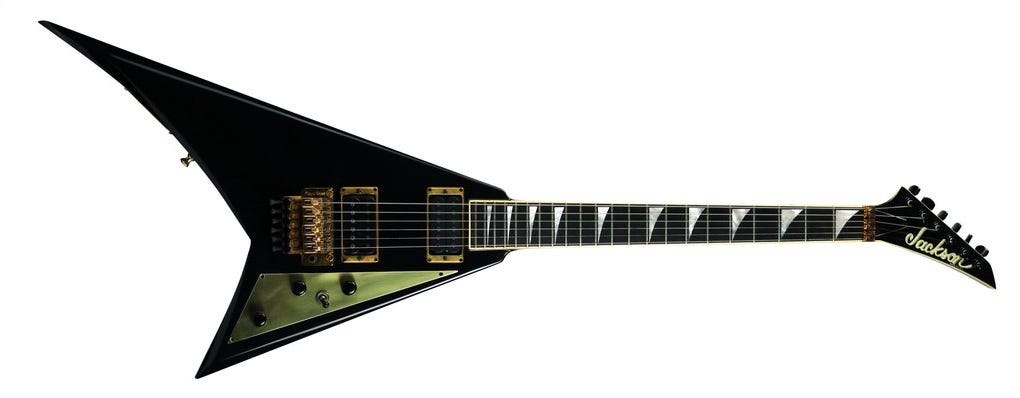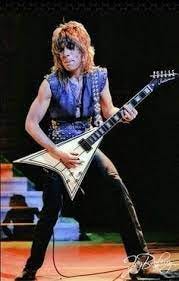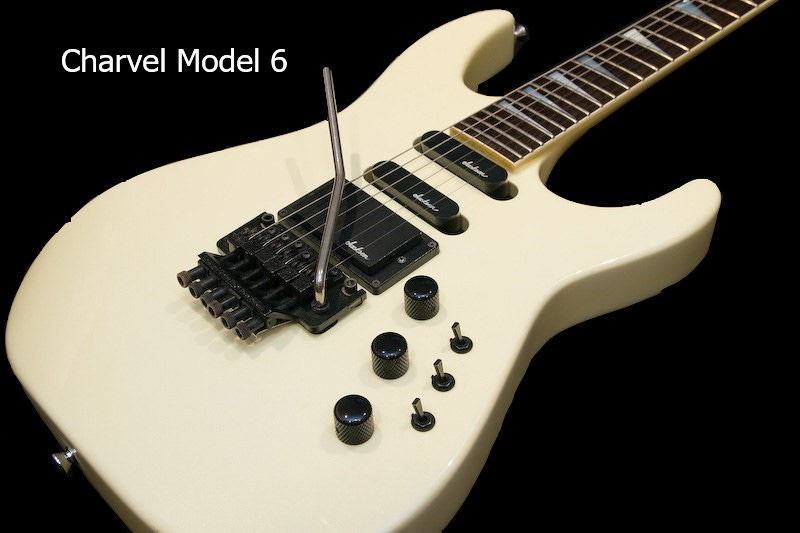Guitar Gavel Lick Of The Week with Stevie K - Pentatonic Shape Major or Minor
Stevie K is spot on with his poetic metaphors in this week's lick and breaks down a great three octave move.
Paraphrasing Steve’s words:
Patterns and scales are the alphabet, your guitar is the typewriter. Insert your personality, insert your voice, and have fun.
Thank you Steve for sharing your time, treasures, and talent!
In 1978 Grover Jackson bought Charvel’s Guitar Repair from his boss Wayne Charvel. Located in Azusa, CA at that time their main lines of service was as a parts supplier.
The Charvel brand did very well in the late 1970s and accelerated significantly in the early 1980s. The company downright blew up when Grover created the Jackson label to market the Jackson Randy Rhoads which went into production in 1983.
There’s a storied history of the story… how Randy Rhoads made contact with Grover Jackson and presented his idea/drawing for an asymmetrical flying V. Nonetheless, a meeting did take place in December of 1980 and the two collaborated to bring Randy’s concept to life.
Randy called his creation the “Concorde”, named after the supersonic passenger jet.
And this is where the Jackson brand begins…
Grover was concerned the design was a little too edgy for the current Charvel offerings and didn’t want to hurt the brand. Preferring safety over sorrow, he painted his last name on the headstock in case this experiment didn’t go over well.
The opposite occurred.
After gigging with the guitar for several months Rhoads requested some tweaks to the Concorde and a second version was delivered in December of 1981. While on tour with Ozzie Osbourne, Rhoads died in an airplane crash in March of 1982, the guitar was put into production in 1983 and has since become an iconic mainstay of the brand.
Despite the growing success of Charvel and the newfound success of Jackson Guitars, relentless money woes forced Grover Jackson to license both labels to Texas based International Music Corporation (IMC) in 1985. A year later he sold a majority interest to IMC and they moved all Charvel production models to Japan. Jackson models went to Ontario.
Over time, IMC eventually appointed the higher end models to Jackson and left the medium and entry level guitars in the Charvel brand family. However, the factory contracted for production, Chushin Gakki, was an excellent guitar manufacturer and had been making guitars since the 1950s.
Prior to 1986, Charvel was essentially a custom shop and the new corporate owner needed a model naming convention that wasn’t really in place before. Hence the new line-up that year included the sophisticated nomenclature (insert sarcasm emoji :-), Models 1 - 6.
Models 1-4 sported a bolt-on neck, while models 5 & 6 were a neck-through and are very similar to a Jackson Soloist.
The highest end offering was the Model 6 featuring two Jackson J-200 dual coil pickups and a humbucker made for their active electronics circuit.
In the dual coils, the wound bobbins are stacked on top of each other to create a humbucking effect, but “eliminates” the single coil noise.
Though Grover Jackson retained a 12% equity position in Charvel/Jackson he sold out completely in 1989. That was after another cost cutting move in which most of the Ontario staff was laid-off and nearly all Jackson branded guitar production was also shipped to Japan. On the used market, a 1980s Charvel Model 6 is approximately half the price of a comparable Jackson Soloist making it a worthy and more affordable entry point into the increasingly collectable shredder category. It’s worth noting, a major differentiator between Charvel and Jackson was the use of bolt-on necks for most Charvel’s (except the highest ends guitars) while Jackson’s were dominantly neck neck-through construction.
1986 Model 6 Specs: Poplar body, maple neck, rosewood fretboard, sharkfin inlays, two J-200 dual coils, and one J-50BC humbucker, 1 volume, 1 tone, and 1 EQ, three pickup toggles, Kahler 2300 Pro tremolo




